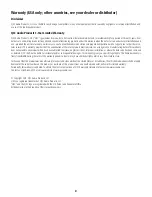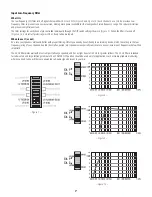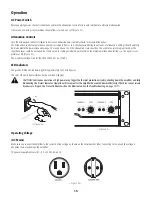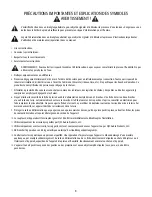
7
8
Input Low-Frequency Filter
What it is
The low-frequency (LF) filter rolls off signals below either 30 Hz or 50 Hz
(Figure 9
and
Figure 10)
. Each channel has a 12 dB per octave Low
Frequency Filter to prevent cone over-excursion, making more power available for the loudspeaker’s rated frequency range. This reduces distortion
and prevents amplifier overload.
The filter settings for each channel are controlled individually through the DIP switch settings shown in
(Figure 7)
. When the filter is turned off
(Figure 8)
, a 5 Hz roll off protects against DC or deep sub-audio inputs.
When to use it (or not)
As a rule, your speakers will sound better with proper filtering. Unless you already have filtering in a preceding device, match the setting to the low
frequency rating of your speakers. Vented (bass reflex, ported, etc.) speakers are especially sensitive to cone over-excursion at frequencies below their
rated limit.
The 50 Hz filter works well with most compact full-range speakers, and has a slight boost at 100 Hz for greater fullness. The 30 Hz filter is intended
for subwoofers and large full-range cabinets. The LF FILTER OFF position should be used only for applications such as studio playback monitoring,
where you need to know if there are unwanted sub-audio signals present in your mix.
— Figure 7 —
— Figure 8 —
— Figure 9 —
— Figure 10 —
Summary of Contents for CMX2000V
Page 1: ...User Manual CMX 2000V Amplifier CMX Series TD 000323 00 TD 000323 00 ...
Page 21: ...Manuel d utilisation Amplificateur CMX 2000V Série CMX TD 000323 00 TD 000323 00 ...
Page 41: ...Benutzerhandbuch Verstärker CMX 2000V Serie CMX TD 000323 00 TD 000323 00 ...
Page 61: ...用户手册 CMX 2000V 放大器 CMX 系列 TD 000323 00 TD 000323 00 ...
Page 81: ...Manual del usuario Amplificador CMX 2000V Serie CMX TD 000323 00 TD 000323 00 ...









































